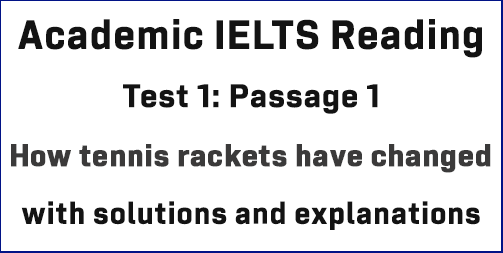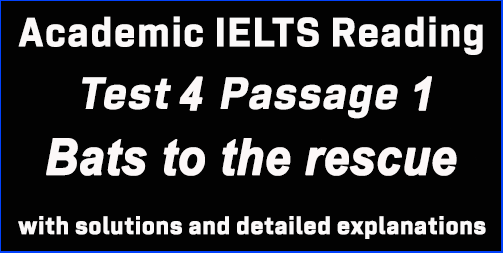Academic IELTS Reading: Test 2 Passage 1; The Dead Sea Scrolls; with top solutions and best explanations
This Academic IELTS Reading post focuses on solutions to an IELTS Reading Test 2 passage 1 that has a passage titled ‘The Dead Sea Scrolls’. This is a targeted post for Academic IELTS candidates who have major problems locating and understanding Reading Answers in the AC module. This post can guide you the best to understand every Reading answer without much trouble. Finding out IELTS Reading answers is a steady process, and this post will assist you in this respect.
Academic IELTS: Reading Module
Passage 1: Questions 1-13
The headline of the passage: The Dead Sea Scrolls
Questions 1-5:
Completing notes:
[In this type of question, candidates are asked to complete different notes with ONE WORD ONLY from the passage. Keywords are important to find answers correctly. Generally, this type of question maintains a sequence. However, we should not be surprised if the sequence is not maintained. Find the keywords in the passage and you are most likely to find the answers.]
Question no. 1: Discovery
Qumran, 1946/7
- three Bedouin shepherds in their teens were near an opening on side of cliff
- heard a noise of breaking when one teenager threw a __________
Keywords for this question: Qumran, 1946/7, three Bedouin shepherds, teens, near, opening on side of cliff, heard a noise, breaking, one teenager threw,
In paragraph no. 1, take a look at lines 1-4, “In late 1946 or early 1947, three Bedouin teenagers were tending their goats and sheep near the ancient settlement of Qumran, located on the northwest shore of the Dead Sea in what is now known as the West Bank. One of these young shepherds tossed a rock into an opening on the side of a cliff and was surprised to hear a shattering sound. . .. .. . . . .”
Here, In late 1946 or early 1947 = 1946/7,
tending their goats and sheep = shepherds,
tossed = threw,
hear a shattering sound = heard a noise of breaking,
So, the answer is: rock
Questions no. 2 & 3:
- teenagers went into the 2. ________ and found a number of containers made of 3. ________
Keywords for this question: teenagers went into, found a number of containers, made of,
In paragraph no. 2, take a look at lines 5-6. The writer of the passage says here, “ . .. . . .. . He and his companions later entered the cave and stumbled across a collection of large clay jars, seven of which contained scrolls with writing on them. .. . .. . .”
Here, He and his companions later entered = teenagers went into,
stumbled across = found,
a collection of large clay jars = found a number of containers made of clay,
So, the answers are:
- cave
- clay
Question no. 4: The scrolls
- date from between 150 BCE and 70 CE
- thought to have been written by group of people known as the _________
Keywords for this question: the scrolls, between 150 BCE and 70 CE, thought to have been, written by, people know as,
Paragraph no. 2 gives us the answer to this question. The writer says here, “The origin of the Dead Sea Scrolls, which were written around 2,000 years ago between 150 BCE and 70 CE, is still the subject of scholarly debate even today. According to the prevailing theory, they are the work of a population that inhabited the area until Roman troops destroyed the settlement around 70 CE. The area was known as Judea at that time, and the people are thought to have belonged to a group called the Essenes, a devout Jewish sect.”
Here, According to the prevailing theory = thought to,
work of a population = have been written by group of people,
a group called = known as,
So, the answer is: Essenes
Question no. 5:
- written mainly in the ________ language
Keywords for this question: written, mainly in, language,
In paragraph no. 3, have a close look at the first lines, “The majority of the texts on the Dead Sea Scrolls are in Hebrew, . .. . .. . . . .”
Here, The majority of the texts = written mainly,
So, the answer is: Hebrew
Questions 6-13: TRUE, FALSE, NOT GIVEN
[In this type of question, candidates are asked to find out whether:
The statement in the question agrees with the information in the passage – TRUE
The statement in the question contradicts the information in the passage – FALSE
If there is no information on this – NOT GIVEN
For this type of question, you can divide each statement into three independent pieces and make your way through with the answer. This question type generally follows a sequence. So, scanning skills is effective here.]
Question no. 6: The Bedouin teenagers who found the scrolls were disappointed by how little money they received for them.
Keywords for this question: Bedouin teenagers, were disappointed, how little money, they received,
In lines 6-8 of paragraph no. 1, the writer talks about the cost of the Dead Sea Scrolls, “. . . . The teenagers took the seven scrolls to a nearby town where they were sold for a small sum to a local antiquities dealer. .. . .. . .”
However, it doesn’t say anything about the disappointment of the Bedouin teenagers about the money they received.
So, the answer is: NOT GIVEN
Question no. 7: There is agreement among academics about the origin of the Dead Sea Scrolls.
Keywords for this question: agreement among academics, about, origin of the Dead Sea Scrolls,
The first few lines of paragraph no. 2 give us the answer to this question, as the writer mentions here, “The origin of the Dead Sea Scrolls, which were written around 2,000 years ago between 150 BCE and 70 CE, is still the subject of scholarly debate even today. .. .. .. .. … .”
Here, is still the subject of scholarly debate even today = There is NO agreement among academics about the origin,
So, the answer is: FALSE
Question no. 8: Most of the books of the Bible written on the scrolls are incomplete.
Keywords for this question: most of the books, the Bible, written on the scrolls, incomplete,
The writer says in lines 1-2 of paragraph no. 4, “The Dead Sea Scrolls include fragments from every book of the Old Testament of the Bible except for the Book of Esther. .. . .. . . ..”
Here, include fragments = incomplete,
Every book . . … except for the Book of Esther = Most of the books of the Bible,
So, the answer is: TRUE
Question no. 9: The information on the Copper Scroll is written in an unusual way.
Keywords for this question: information, the Copper Scroll, written, unusual way,
In paragraph no. 5, the writer says, “The writing on the Dead Sea Scrolls is mostly in black or occasionally red ink, and the scrolls themselves are nearly all made of either parchment (animal skin) or an early form of paper called ‘papyrus’. The only exception is the scroll numbered 3Q15, which was created out of a combination of copper and tin. Known as the Copper Scroll, this curious document features letters chiseled onto metal – perhaps, as some have theorized, to better withstand the passage of time. .. . . .. . .”
Here, The only exception . .. . . . created out of a combination of copper and tin = written in an unusual way.,
So, the answer is: TRUE
Question no. 10: Mar Samuel was given some of the scrolls as a gift.
Keywords for this question: Mar Samuel, given, some of the scrolls, as a gift,
In paragraph no. 5, the writer says in the first few lines, “Some of the Dead Sea Scrolls have been on interesting journeys. In 1948, a Syrian Orthodox archbishop known as Mar Samuel acquired four of the original seven scrolls from a Jerusalem shoemaker and part-time antiquity dealer, paying less than $100 for them. . .. . . .. .”
Here, paying less than $100 for them = Mar Samuel bought the scrolls, he did NOT get them as a gift,
So, the answer is: FALSE
Question no. 11: In the early 1950s, a number of educational establishments in the US were keen to buy scrolls from Mar Samuel.
Keywords for this question: early 1950s, a number of educational establishments, the US, keen to buy scrolls, from Mar Samuel,
In lines 4-5 of paragraph no. 5, the writer explains, “ .. . .. .. . He then travelled to the United States and unsuccessfully offered them to a number of universities, including Yale. .. . .. . . .”
Here, unsuccessfully offered them to a number of universities = the educational establishments were NOT keen to buy scrolls,
So, the answer is: FALSE
Question no. 12: The scroll that was pieced together in 2017 contains information about annual occasions in the Qumran area 2000 years ago.
Keywords for this question: the scroll, pieced together in 2017, contains information about, annual occasions, Qumran area, 2000 years ago,
In the final paragraph, the writer says, “In 2017, researchers from the University of Haifa restored and deciphered one of the last untranslated scrolls. The university’s Eshbal Ratson and Jonathan Ben-Dov spent one year reassembling the 60 fragments that make up the scroll. Deciphered from a band of coded text on parchment, the find provides insight into the community of people who wrote it and the 364-day calendar they would have used. The scroll names celebrations that indicate shifts in seasons and details two yearly religious events known from another Dead Sea Scroll. .. . .. … ..”
Here, reassembling the 60 fragments that make up the scroll = the scroll was pieced together,
details two yearly religious events = information about annual occasions,
So the answer is: TRUE
Question no. 13: Academics at the University of Haifa are currently researching how to decipher the final scroll.
Keywords for this question: someone, interested, environmental matters, lived here, for a time,
We do not find any information regarding the current research on how to decipher the final scroll in the final paragraph.
So the answer is: NOT GIVEN
Click here for solutions to Passage 2: A second attempt at domesticating the tomato
Click here for solutions to Passage 3: Insight or evolution?




Excellent explanation.Thanks for the giving awareness regarding ielts reading which is more important
Great
You only post Cambridge 17 reading passage 1 only. I couldn’t find the passage 2 and 3 since.
12no. question need more explanation!!here in the passage nothing is given about QUMRAN Area and when they wrote it. And in the question it is given that they wrote it 2000 years ago and also mention the area. How it’s can be true .YES it does match the first part of the question but not the 2nd part!!! Hopwfully I will get my reeply soon
Answer for the question 12 in test 2 reading is wrong
It should be not given
Can you explain why?